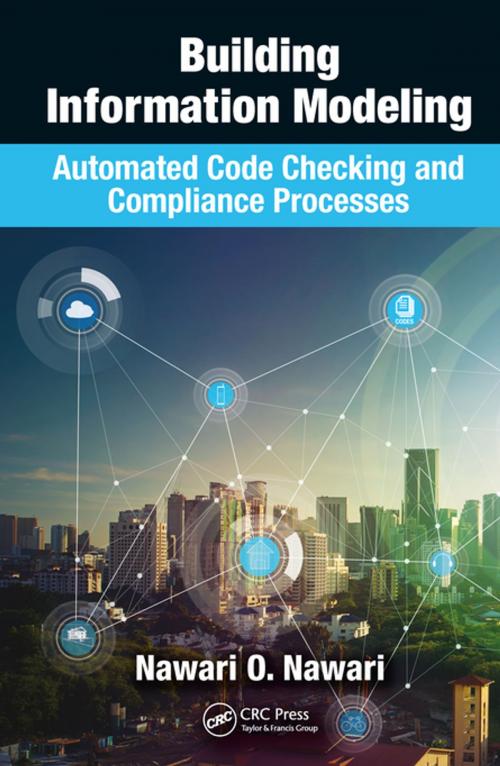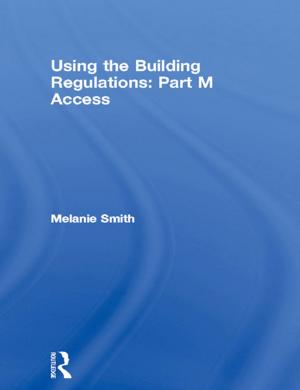Building Information Modeling
Automated Code Checking and Compliance Processes
Nonfiction, Science & Nature, Technology, Construction & Construction Trades, Engineering| Author: | Nawari O. Nawari | ISBN: | 9781351200974 |
| Publisher: | CRC Press | Publication: | February 12, 2018 |
| Imprint: | CRC Press | Language: | English |
| Author: | Nawari O. Nawari |
| ISBN: | 9781351200974 |
| Publisher: | CRC Press |
| Publication: | February 12, 2018 |
| Imprint: | CRC Press |
| Language: | English |
"Many researchers and software developers have put a lot of effort into finding solutions for automated code checking. This book is a good summary of these efforts and provides readers with a comprehensive understanding of the status of such technologies in the industry. It also guides readers on implementation of such techniques using the platforms and tools currently available in the industry."
— Issa Ramaji, University of North Florida, USA
Building Information Modeling: Automated Code Checking and Compliance Processes covers current and emerging trends in automating the processes of examining building design against codes and standards of practice. The role of Building Information Modeling (BIM) technologies in these processes is thoroughly analyzed and explains how this new technology is significantly transforming modern architecture, engineering, and construction (AEC) domains. The book also introduces the theoretical background of computerizing compliance verification, including domain knowledge representations, building model representations, and automated code checking systems. An underlying goal for the material covered is to present the use of BIM technology as an integral part of the automated auditing process that can lead to a more comprehensive, intelligent, and integrated building design– a design where an optimized solution can be achieved in harmony with the current codes and standards of practice.
This new proposed BIM-based framework for automating code conformance checking is one of the most powerful methods presently available to reflect actual building code requirements, and the methods described in the book offer significant benefits to the AEC industry such as:
- Providing consistency in interpretation of regulatory provisions
- Reducing code compliance validation errors, and the cost and time associated with compliance checking
- Allows for the ability to self-check required aspects before bidding
- Reduces the amount of time and resources required during design review
- Allows for optimal design, along with faster turnaround on feedback, and potentially faster approvals for construction permits by building and infrastructure authorities
"Many researchers and software developers have put a lot of effort into finding solutions for automated code checking. This book is a good summary of these efforts and provides readers with a comprehensive understanding of the status of such technologies in the industry. It also guides readers on implementation of such techniques using the platforms and tools currently available in the industry."
— Issa Ramaji, University of North Florida, USA
Building Information Modeling: Automated Code Checking and Compliance Processes covers current and emerging trends in automating the processes of examining building design against codes and standards of practice. The role of Building Information Modeling (BIM) technologies in these processes is thoroughly analyzed and explains how this new technology is significantly transforming modern architecture, engineering, and construction (AEC) domains. The book also introduces the theoretical background of computerizing compliance verification, including domain knowledge representations, building model representations, and automated code checking systems. An underlying goal for the material covered is to present the use of BIM technology as an integral part of the automated auditing process that can lead to a more comprehensive, intelligent, and integrated building design– a design where an optimized solution can be achieved in harmony with the current codes and standards of practice.
This new proposed BIM-based framework for automating code conformance checking is one of the most powerful methods presently available to reflect actual building code requirements, and the methods described in the book offer significant benefits to the AEC industry such as:
- Providing consistency in interpretation of regulatory provisions
- Reducing code compliance validation errors, and the cost and time associated with compliance checking
- Allows for the ability to self-check required aspects before bidding
- Reduces the amount of time and resources required during design review
- Allows for optimal design, along with faster turnaround on feedback, and potentially faster approvals for construction permits by building and infrastructure authorities















